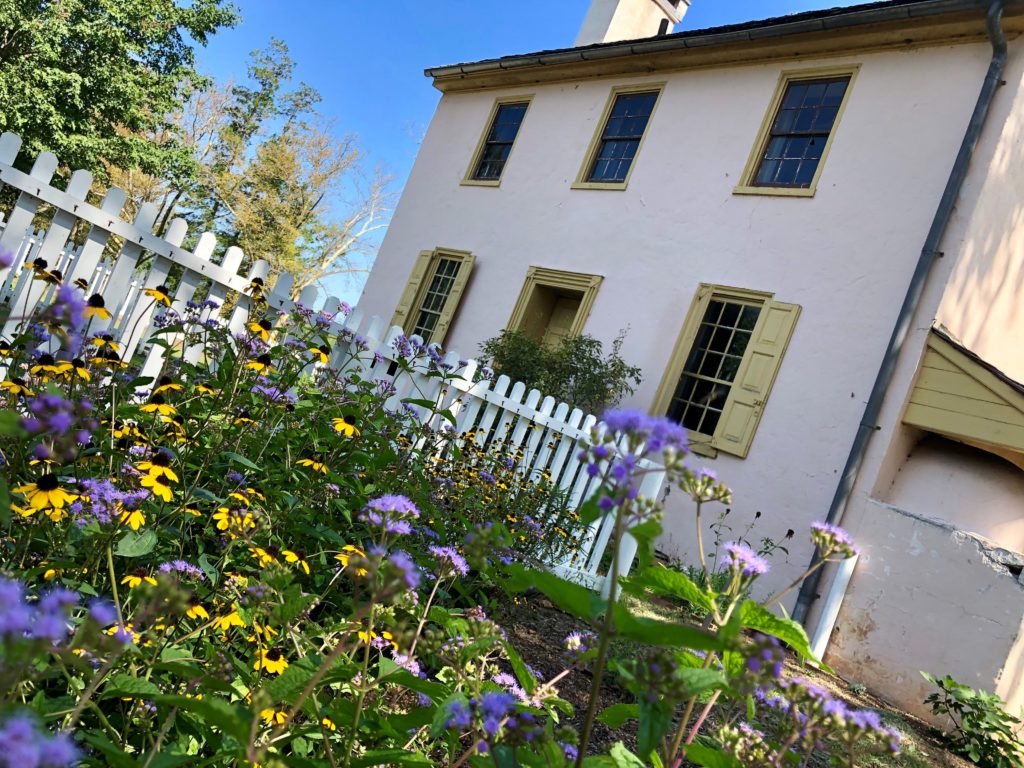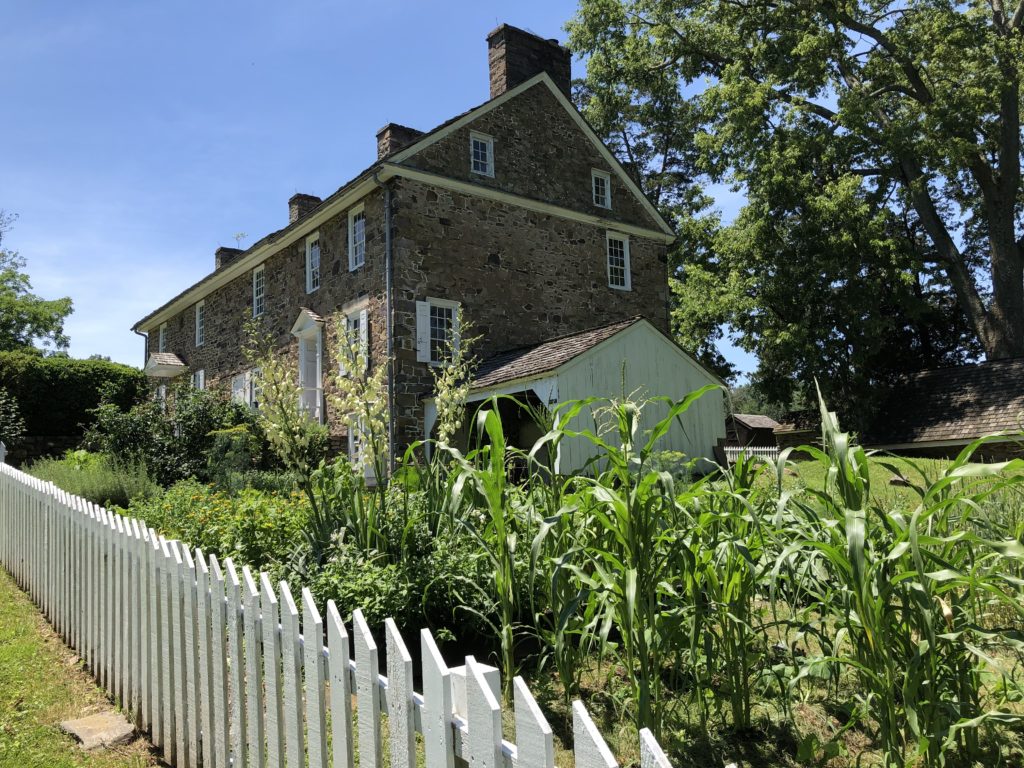Gardens
In the 18th century, gardens provided plants essential for making food and beverages, medicine, and other household items. As part of its mission to educate the public about 18th century life, the Friends of Washington Crossing Park cultivate three gardens: the Historic Village Garden, the Hibbs House Kitchen Garden, and the Thompson-Neely Farmstead Garden.
Please note: the gardens at Washington Crossing Historic Park are not pick-your-own. We rely on some of our plantings for public and educational events.
Any questions? Get in touch with Anna Davis-Agostini, Historical Horticulturist at Washington Crossing Historic Park.
The Hibbs House Kitchen Garden

The Hibbs House Kitchen Garden encompasses many species of plants – including culinary and medicinal herb – that are accurate to 1776 or earlier and likely to have been grown in Bucks County during the Revolution.
The garden features a tool shed and large trellis, which are both historically-accurate timber-framed structures that use traditional joinery to form the connections.
Numerous activities will be offered to both seasonal visitors on tours and to the thousands of schoolchildren who visit the park each year for field trips. Educational opportunities at the Hibbs House Kitchen Garden include:
- Exploration of garden plants used in medicine and cooking
- Discussions of native, non-native and invasive plant
- Demonstrations of broom-making, cooking, and natural dyeing
- Sowing and harvesting programs
Learn more about the Historic Village Garden:
- Planting New Opportunities for Historical Education
- New Structures Add Another Dimension to Hibbs House Garden
- Rooted in History: St. John’s Wort, Corn Poppy, Borage, Spring’s Messenger, Bee Balm
- Planting the Seeds
The Thompson-Neely Farmstead Garden

Located two miles north of Washington Crossing Historic Park’s Visitor Center and Historic Village, the Thompson-Neely Farmstead Garden grows ornamentals, vegetables, and culinary and medicinal herbs in about 700 square feet of space. The garden offers multiple beds, including a road-facing ornamental bed along the fence-line and seven in-ground beds down a small flight of steps on the side of the building.
The main section of the Thompson-Neely House Garden is located directly off the basement kitchen and a few steps from the building’s original kitchen. The area is sheltered and receives ample sunlight. While the park’s historical horticulturalists have not found documented evidence of a kitchen garden in its modern-day location, the home certainly would have had a kitchen garden, and its modern-day placement is a likely spot.
The park’s historical horticulturalists hope to grow plants appropriate to wool-dying in this garden. They’re currently growing a small batch of wheat and have successfully grown corn in the garden. The corn grown here, Sehsapsing Delaware Black Flint, is believed to be the same variety that was grown locally by the indigenous Lenni Lenape. John Pidcock is believed to have had a lively trade relationship with this group.

